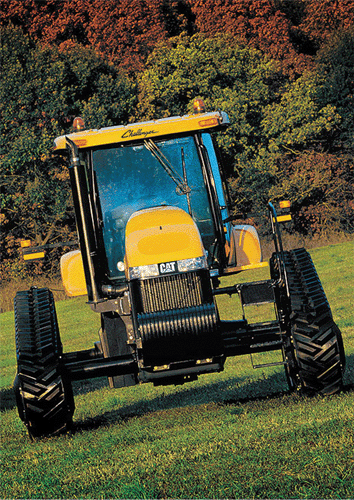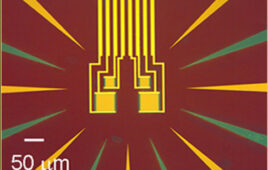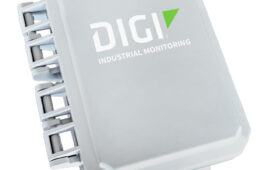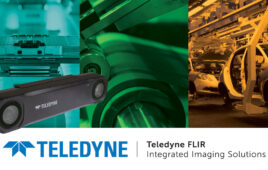Off-highway tractors daily slog through mud, muck, and other rough terrain. Developers of the Challenger MT700B Series of track tractors, from AGCO, wanted to improve fuel efficiency and reliability as well as decrease manufacturing costs. To accomplish these goals, engineers had to redesign the tractor from the ground up.
A key part of the redesign was switching from a hydraulic steering system to an electronic steer-by-wire system. This choice eliminated many of the mechanical parts inherent in the hydraulic steering system. It also reduced overall tractor weight, which aided fuel efficiency. Reliability improved because there were fewer parts that could experience failure. Fewer mechanical parts to process also reduced manufacturing costs. These long-term benefits overcame any short-term costs required to develop the electronic steering.

BEI Duncan Electronics’ triple-redundant sensor pack incorporates three completely independent Pulse Width Modulated (PWM) outputs and gear reduction. The sensor pack was designed and developed as part of the steer-by-wire steering system used in AGCO’s Challenger® track tractors.
The manufacturer chose BEI Duncan Electronics to design the steer-by-wire system. “The new system required a custom electronic design as well as mechanical packaging specific to the tractor,” explained Diana Westerlund, account manager, BEI Duncan.
The ability to let operators feel control was not critical to the actual operation of the tractor, however, it was a key specification of the manufacturer. With an electronic steering system, operators lose that feeling of control found in hydraulic systems unless torque is designed into the system to simulate it. An operator readily feels the “drag” (torque) of hydraulic steering when he turns the steering wheel. With steer-by-wire, there is no equivalent sensation because there is no mechanical connection; everything is electronically controlled. Thus, when the steering wheel is turned so many degrees, a sensor sends an output signal to the CPU – whether that signal is voltage, resistance, or duty cycle – to turn the wheels (or tracks) to the appropriate angle.
“Creating just the right feel of steering control was subjective,” said Westerlund. “Since there was no standard to go by, this proved to be Duncan’s biggest challenge of the project.” After a substantial amount of development and field testing, Duncan designed a mechanical package with precise spring and stop mechanism adjustments in the actual sensor enclosure to ergonomically create the feel of hydraulic steering.


Steer-by-wire electronic steering system improves fuel efficiency and reliability while reducing manufacturing costs of the Challenger track tractors.
A second challenge was developing a gear train reduction into the steering system to enable a longer mechanical movement over a shorter electrical angle. The gear train reduction was needed to reduce the potential amount of backlash created by the fact that the steering wheel can move over 360 degrees, but a sensor cannot. With Duncan’s experience designing memory seats for automotive applications, they were well-equipped to meet this challenge. The mechanical backlash was eliminated with the design of a mechanical enclosure around the sensors. The resulting gear train assembly reduced the movement to only one degree and facilitated instantaneous and absolute position feedback motion control.
Ensuring safety was another important element in the new tractors. Because there is no mechanical linkage in a steer-by-wire system, the tractor depends on the output signals from the sensor for steering control — the sensors in effect are the tractor’s steering. To ensure a high margin of safety, Duncan designed and developed the system with a triple-redundant sensor pack with three independent sensor outputs, all driven from a common steering shaft. The three sensors are always working during vehicle operation. If one sensor fails, a fault code alerts the operator for service, and the other two sensors allow continued operation of the vehicle until service is available.
BEI Duncan Electronics, Custom Sensors & Technologies Inc.
www.beiduncan.com
Filed Under: Off highway • construction • agriculture, SENSORS





Tell Us What You Think!